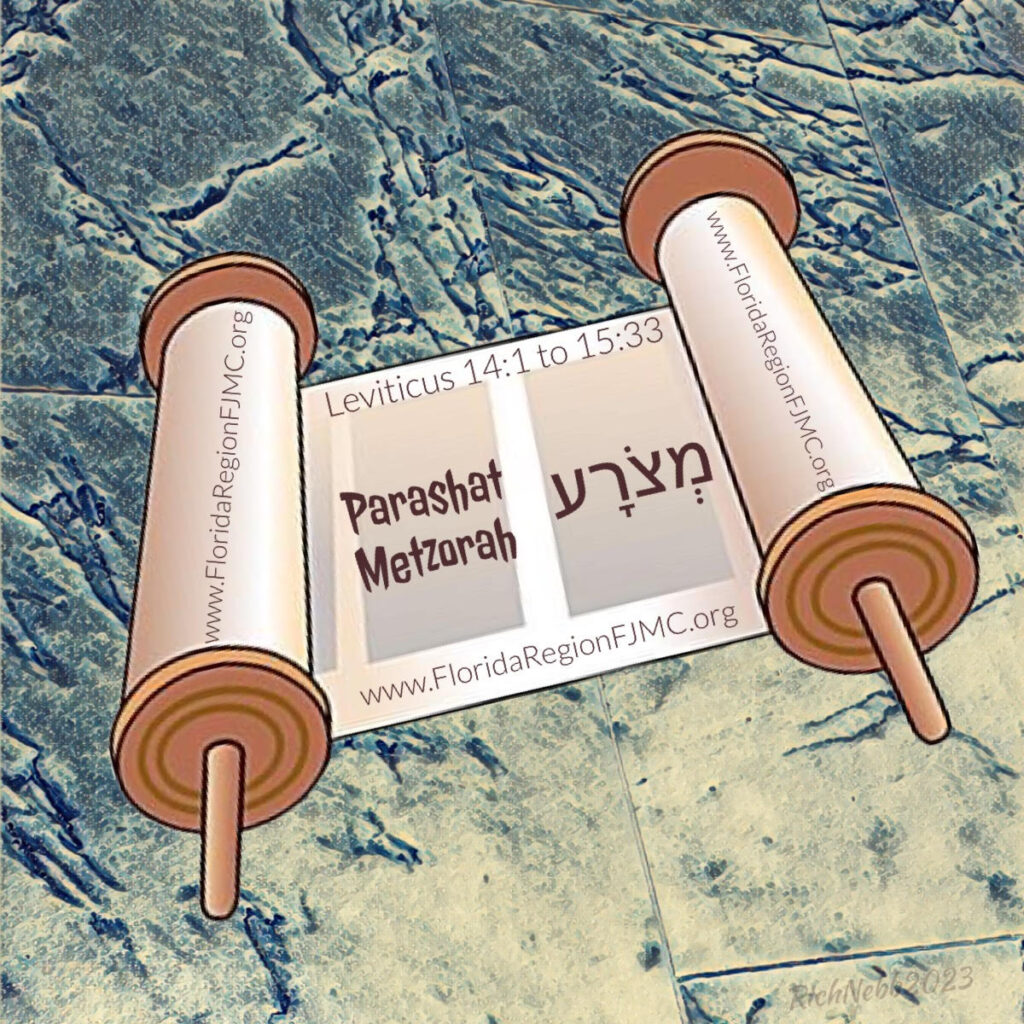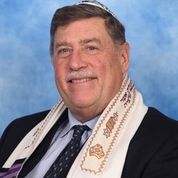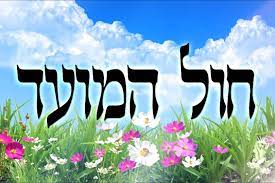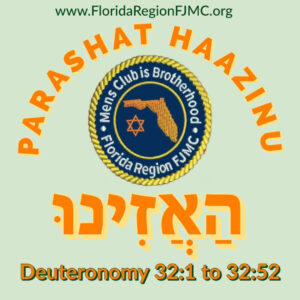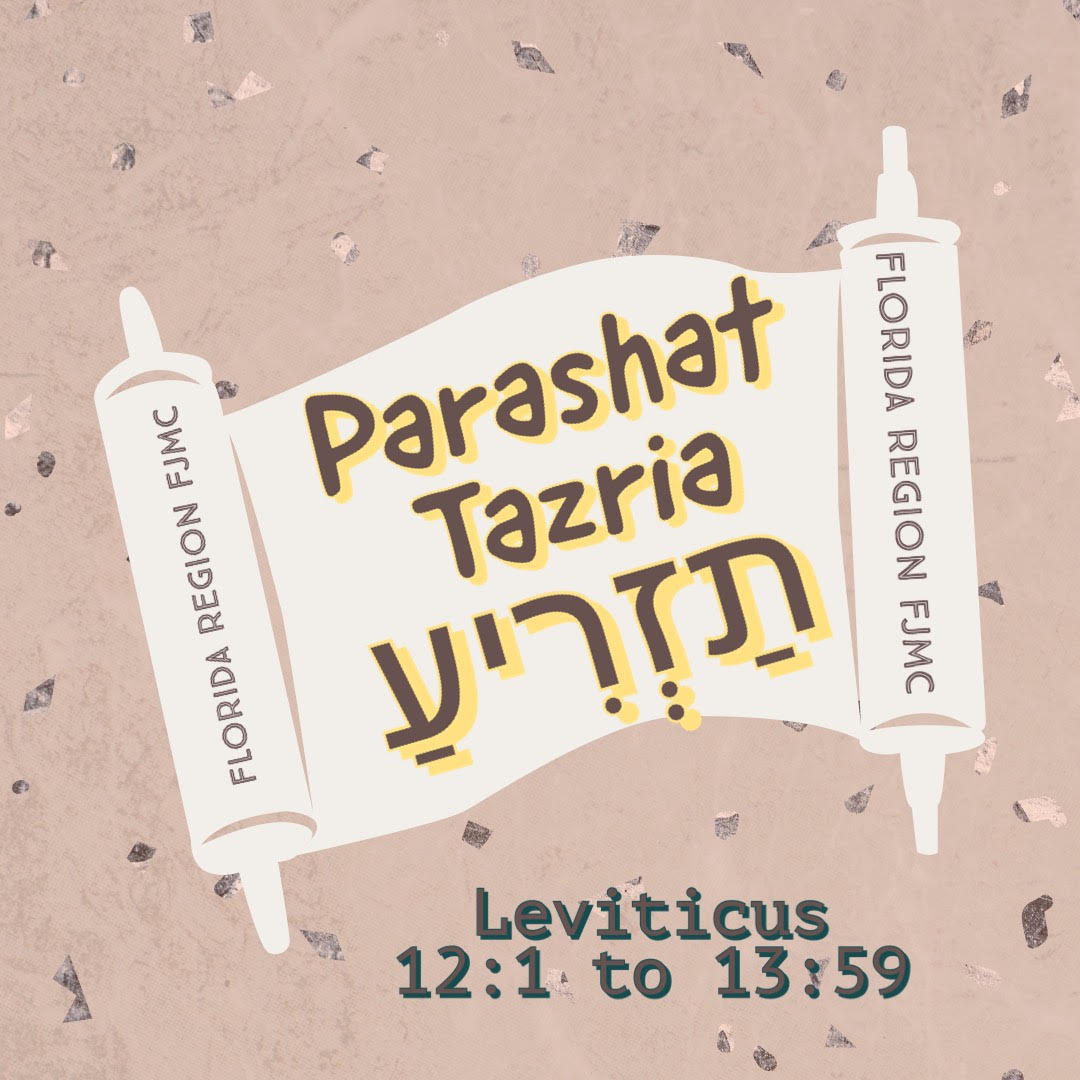
When you Choose Shabbat, you choose to learn that every Shabbat is different and special. This week I learned about Parashat Tazria (תַזְרִיעַ), the 27th weekly Torah portion in the annual cycle of Torah readings.
According to Wikipedia, Tazria (תַזְרִיעַ), Leviticus 12:1 through 13:59, contains 3,667 Hebrew letters, 1,010 words, 67 verses and makes up 128 lines of the Torah scroll. Tazria (translated as “She Bears Seed”) includes a detailed description of the purification process for a woman after childbirth, as well as a discussion of different forms of “tzaraat”, a discoloration condition on skin or clothing, and the requirement of an infected person to dwell alone outside the camp and be inspected by a priest.
Rabbi Michael D Klein of Temple Torat Emet offers his insights on this week’s Torah reading, Tazria, for Shabbat April 13, 2024 aka 5 Nisan 5784:
“Skin disease, and the aftermath of childbirth, seem like yucky topics for a Torah reading, but if you consider this in totality, they are very appropriate topics to consider before we celebrate Passover. Consider that the skin disease is not leprosy, as many have mislabeled it ,but is the result of Lashon Hara- evil speech and its consequences. It is diagnosed by the Kohain and upon its diagnosis, the afflicted is placed outside the camp until cured. Evil speech, like a communicable disease, is spread through human contact and results in the destruction of people’s reputations and good names. The only way to stop its spread is to first diagnose it and then isolate those who are afflicted with it. Finally, in order to return to society, one must offer a sin offering in order to publicly acknowledge their return to civility.
Childbirth, on the other hand, is one of the primary commandments in the Torah. We are told even in the Garden of Eden, “Pru Urvu”; be fruitful and multiply. So why then is the mother required to purify after giving birth? Further, why is the period of purification greater for giving birth to a girl than for the birth of a boy? Biblical scholars agree that while the act of conceiving and birthing children is a major mitzvah, certain bodily fluids which emanate during and after childbirth are themselves Tameh (ritually unclean). Why then is the period of Tameh greater for a female child? Most scholarly commentators suggest that since the female child will eventually, upon attaining puberty, suffer from the discomfort of menstruation and pains of childbirth, the mother, out of sympathy for what her daughter will experience goes through an additional period of purification.
This teaches us an awareness of what emanates from our bodies, whether normal or abnormal, can prevent us from devoting our full attention and devotion to prayer and sacrifice and has the ability to divert us from focusing on the physical instead of the spiritual. In much the same way that eating prohibited foods, as mentioned in last week’s Sedra, can render us Tameh, so too, failure to realize that certain emanations from the body also render us Tameh prevent us from reaching our full spiritual actualization. We are being taught that we must separate ourselves from the physical and spiritual uncleanness which surrounded us while we were in Egypt .These higher standards, set by the Laws of the Torah, elevate us to physical and spiritual levels of holiness and a special relationship with G-d who is concerned about our physical and spiritual well-being.
Questions to Consider?
- Why is the Kohain designated as the person to diagnose and eventually cure Tzaraat?
- Why, if tzaraat is not communicable, is the person required to sit outside the community?
- Why is the mother required to bring offerings after giving birth?
- What is the significance of Tzaraat of clothing or even a house?”
Rabbi Michael D. Klein attended Yeshiva College of South Florida and served as Torah Reader, Hebrew teacher, Chazzan and spiritual leader of various synagogues throughout South Florida. In January 2015 he became Ritual Director, Bnai/Bnot Mitzvah instructor and 7th grade Hebrew instructor for Temple Torat Emet of Boynton Beach. In October 2019 he was accepted into an accelerated track and received his shicha from Yeshiva Adath Wolkowisk and has been the Rabbinic leadership of Temple Torat Emet since August 2020. In September of 2022 he was appointed Rabbinic and Spiritual Advisor of the Florida Region of FJMC.
Choose Shabbat; choose to celebrate, to light candles, sing songs and learn a little Torah.
This moment of Jewish Learning is brought to you by the Florida Region of the Federation of Jewish Men’s Clubs (FJMC). We are part of a confederation of over 200 Jewish Men’s Clubs and Brotherhoods representing over 20,000 members across the United States, Canada, Latin America, and beyond. Learn more about how your Jewish Men’s Club or Brotherhood can affiliate with the FJMC at: https://fjmc.org/for-clubs/affiliating-with-the-fjmc/.
The Florida Region of FJMC serves the needs of affiliated Men’s Clubs and Brotherhoods throughout the State of Florida. Get to know more about the FJMC Florida Region and our growing network of Jewish Men’s Clubs and Brotherhoods at www.floridaregionfjmc.org and please visit and LIKE our Florida Region FJMC Facebook Group at www.facebook.com/FloridaRegionFJMC.
